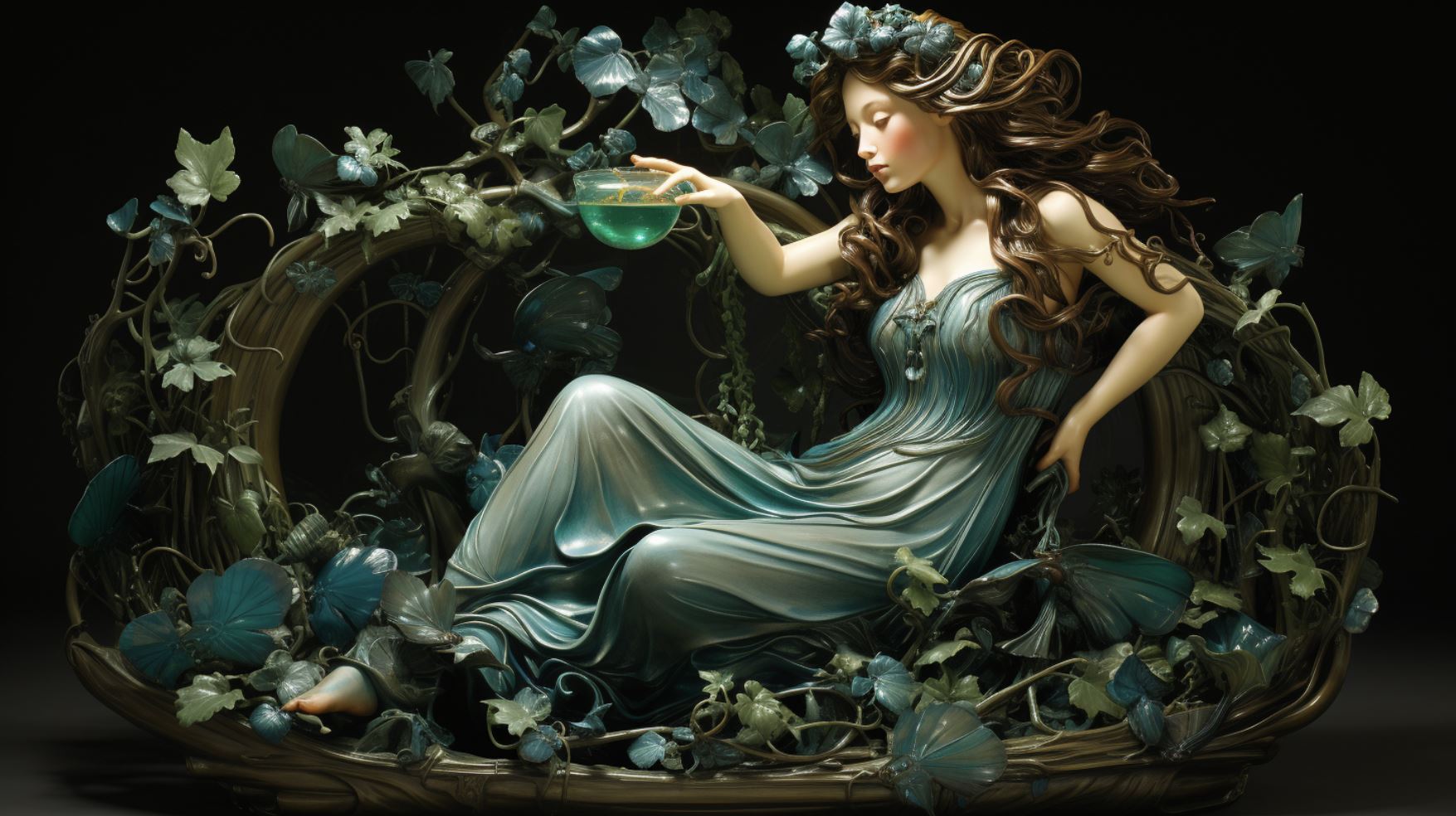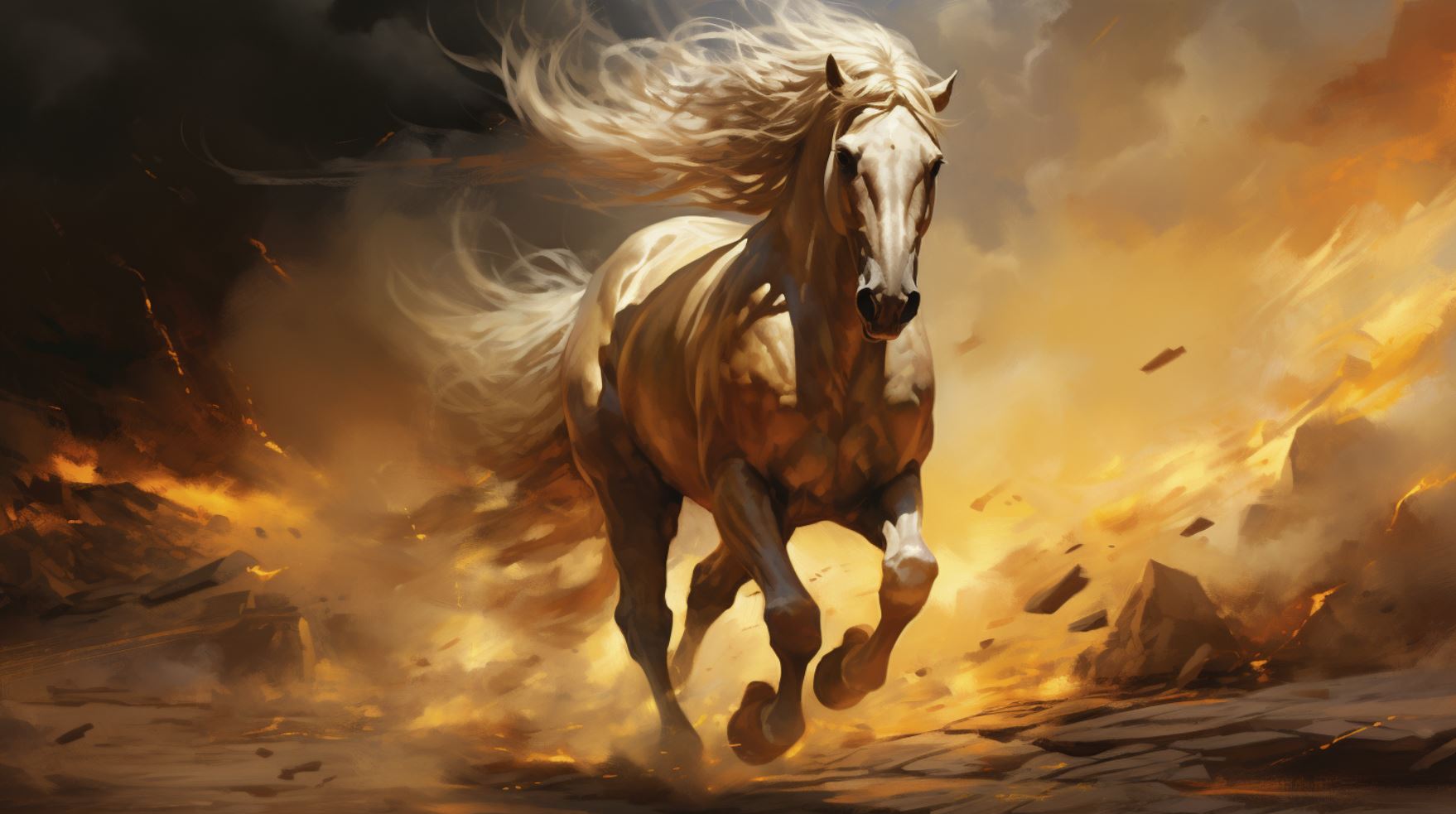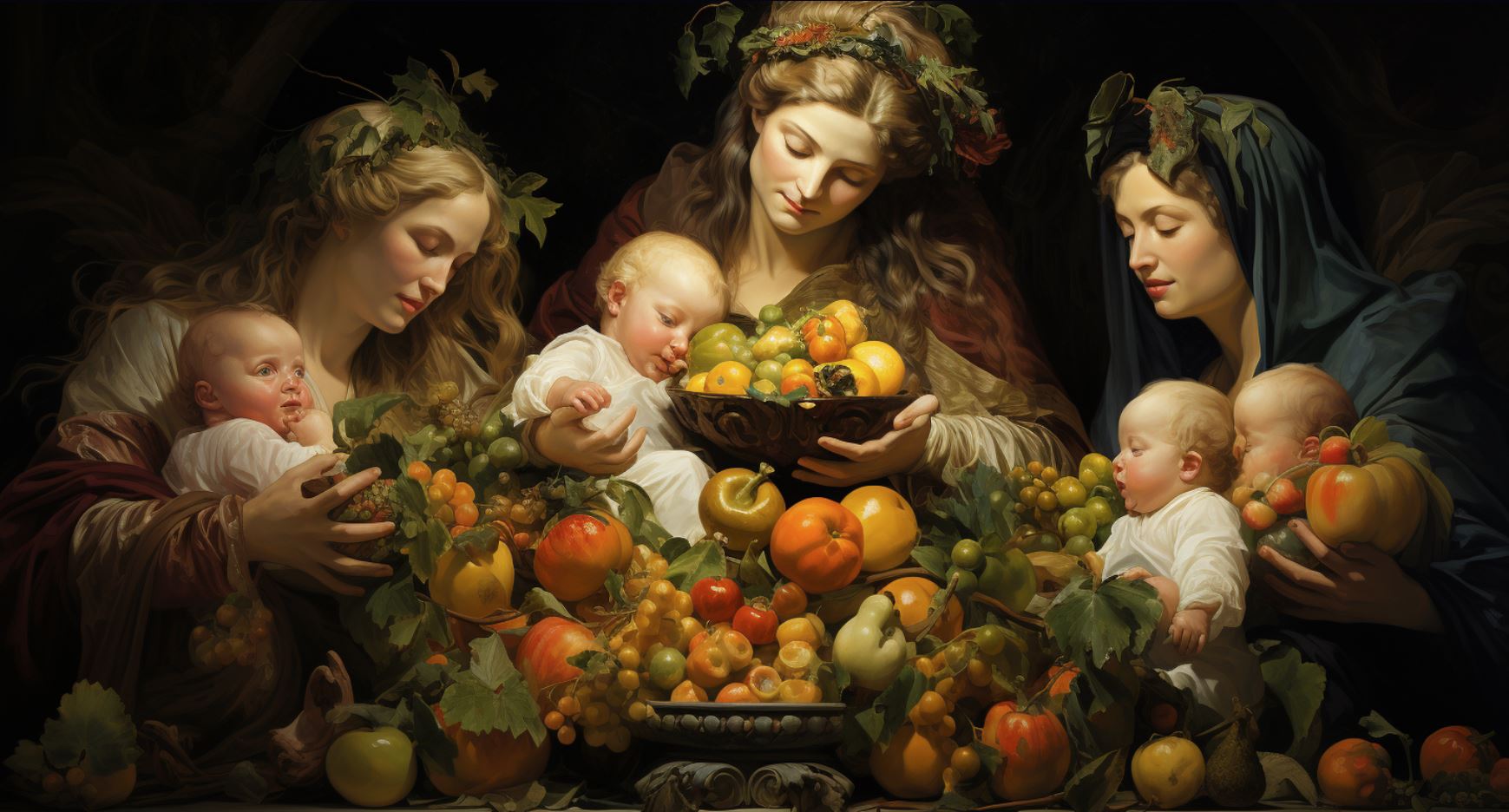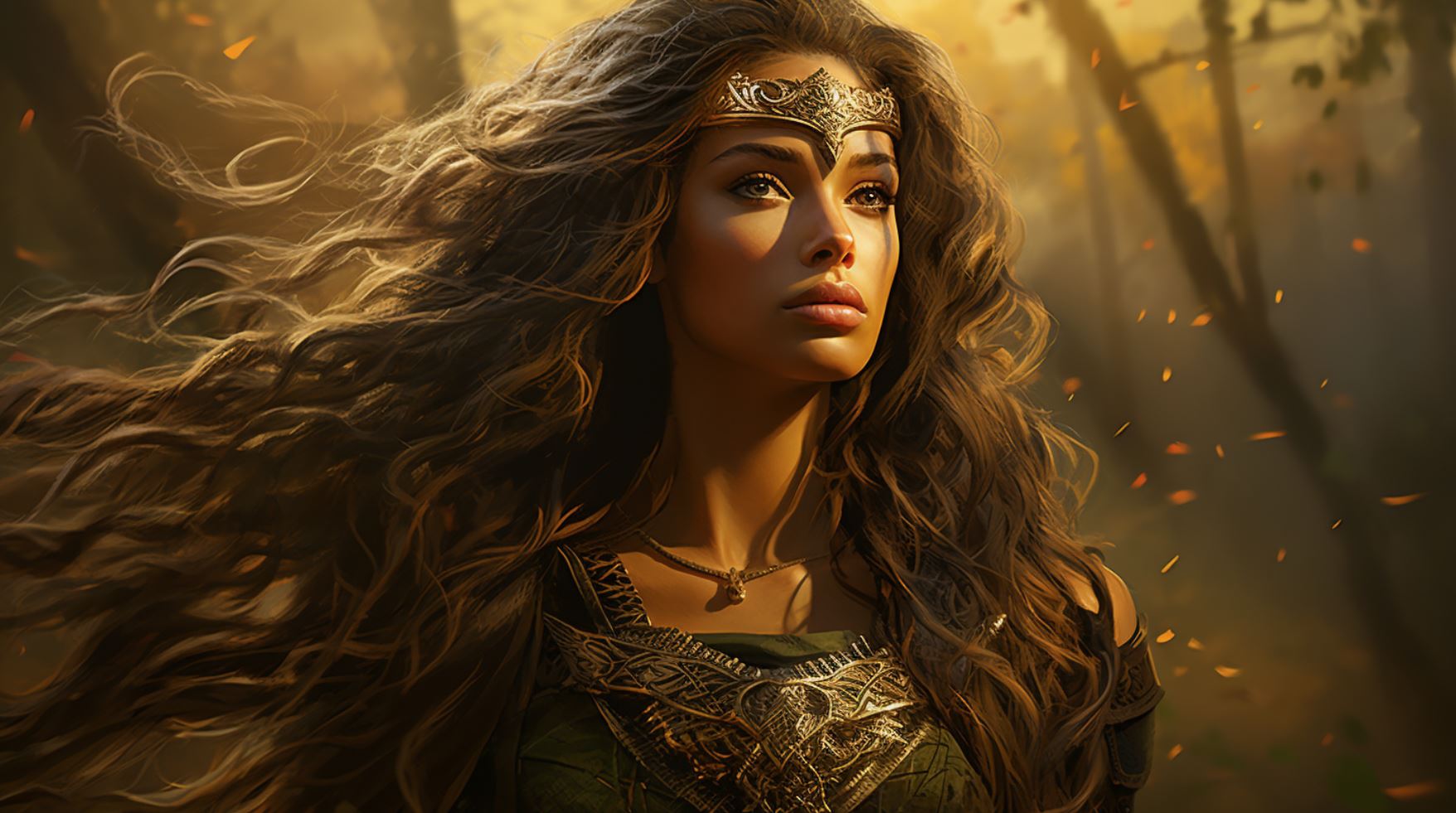Nehalennia Goddess: Unveiling the Ancient Celtic-Germanic Protector of Travelers

Nehalennia goddess, a Celtic-Germanic deity revered in Belgium, Germany, and the Netherlands, holds intriguing ancient origins. Scholars debate her exact origin, but Celtic worship inscriptions suggest her association with the Celtic culture.
Nehalennia’s integration into the Roman-Celtic era led to her assimilation into the Matres/Matronae cult, where she played a significant role as a protector of travelers and sailors. The island of Walcheren became a prominent center for her worship, with numerous altars erected in her honor.
Despite a decline in her worship, Nehalennia’s legacy resurged in the 1990s, captivating renewed interest and symbolizing Dutch cultural heritage. Further exploration into her symbolism and unanswered questions intrigues researchers.
The Origins of Nehalennia
Nehalennia, a beloved goddess in Belgium, Germany, and the Netherlands, has origins that have sparked debate among scholars.
Let us explore the different aspects of her origin and the various theories surrounding it.
The Celtic-Germanic Debate
One topic of discussion centers around whether Nehalennia is a Celtic or Germanic deity. While there is no definitive answer, inscriptions found suggest her association with Celtic culture. Such inscriptions have led researchers to lean towards depicting her as a Celtic goddess.
Speculations on Matres Connection
Furthermore, scholars have speculated on a potential connection between Nehalennia and the Roman-Celtic triple goddesses, known as Matres. These Matres were revered in both Roman and Celtic regions, and similarities have been observed in their functions and symbols.
Etymology of Nehalennia’s Name
The etymology of Nehalennia’s name remains a mystery. While its exact origin is unknown, some theories propose that it could be of non-Indo-European origin or possibly an earlier introduction of the Indo-European language in Western Europe.
Further linguistic research is necessary to shed light on this aspect.
Nehalennia in Roman-Celtic Era
Nehalennia, the Celtic-Germanic goddess, played a significant role during the Roman-Celtic era. She became assimilated into the Matres/Matronae cult, a group of Roman-Celtic triple goddesses, and took on the responsibilities of protecting travelers and sailors.
Let’s explore her assimilation, her role as a protector, and the importance of the Walcheren Island Sanctuary in this era.
Assimilation into Matres/Matronae Cult
Within the Roman-Celtic religious context, Nehalennia found her place among the Matres/Matronae cult. This cult consisted of triple goddesses associated with fertility and protection. The assimilation of Nehalennia into this cult speaks to the syncretism between Celtic and Roman beliefs.
It demonstrates the interconnectedness of ancient cultures and the blending of religious practices.
Role as Protector of Travelers and Sailors
Nehalennia played a pivotal role as the protector of travelers and sailors. Her divine presence ensured safe journeys and protected seafarers from perils during their maritime adventures. The significance of her role highlights the important relationship between humans and the sea, emphasizing the reliance on deities for safety in the treacherous waters.
The Walcheren Island Sanctuary
One of the most prominent centers of worship dedicated to Nehalennia during the Roman-Celtic era was located on the island of Walcheren. Numerous altars and temples were erected on this island as an expression of gratitude for her protection and blessings.
The sanctuary served as a focal point for pilgrims and believers to seek her divine favor and ensure successful journeys.
The Walcheren Island Sanctuary stood as a testament to the devotion and reverence given to Nehalennia during this era.
However, as time passed, her worship declined, eventually coming to an abrupt halt due to the sanctuary’s submersion by the sea in the late 3rd century. This natural event marks the end of an era and creates an air of mystery around Nehalennia’s legacy.
As we delve deeper into the Roman-Celtic era, Nehalennia’s assimilation, her protective role, and the significance of the Walcheren Island Sanctuary shed light on the cultural and religious practices of the time.
These aspects contribute to our understanding of ancient beliefs and the interplay between different civilizations.
Rediscovering Nehalennia
Rediscovering Nehalennia has been an intriguing journey, shedding light on a neglected aspect of Dutch national history. Despite being one of the most prominent goddesses in the Netherlands, Nehalennia’s name has not found its place in Dutch history books or been integrated into the national narrative.
However, in the 1990s, a renewed interest in Nehalennia emerged, bringing her back into the spotlight and sparking further exploration into her significance and cultural heritage.
Neglect in Dutch National History
For a goddess with such a rich history and a significant number of altars, statues, and figurines dedicated to her, it is unfortunate that Nehalennia was excluded from Dutch national history.
Her absence raises questions about the cultural biases and oversights that have shaped the historical narratives of the Netherlands. What led to this neglect and why has Nehalennia’s importance been overlooked for so long?
Renewed Interest in the 1990s
In the 1990s, a notable resurgence of interest in Nehalennia brought her back to public attention.
Scholars, archaeologists, and enthusiasts began to explore her story, seeking to understand the significance of her worship and the mysteries surrounding her. This revival of curiosity sparked various research projects, exhibitions, and publications dedicated to uncovering the hidden aspects of Nehalennia’s legacy.
The renewed interest in Nehalennia also coincided with a broader movement towards reclaiming and celebrating neglected aspects of cultural heritage. People began to recognize the importance of acknowledging and valuing diverse narratives that contribute to a more comprehensive understanding of history.
Unearthing Forgotten Connections
Through archaeological excavations, the discovery of additional altars, and the analysis of inscriptions, researchers have been able to piece together fragments of Nehalennia’s story. They have explored possible connections between Nehalennia and other Celtic, Germanic, and Roman deities, such as the Matres.
These investigations have shed light on the complex cultural interactions and religious syncretism that took place during ancient times.
Redefining Cultural Identity
The resurgence of interest in Nehalennia has also prompted a reevaluation of Dutch cultural identity. It has raised questions about the historical narratives that have shaped national consciousness and challenged the exclusivity of those narratives.
By acknowledging and embracing Nehalennia’s importance, researchers and enthusiasts have broadened the scope of Dutch cultural heritage to encompass the diverse influences that have shaped the nation’s history.
- Exploration of Nehalennia’s artistic representations
- Interpretation of inscriptions and dedicatory texts
- Investigation of Nehalennia’s role in fertility and protection
The ongoing exploration of Nehalennia’s significance and the revival of interest in her story continue to contribute to a more comprehensive understanding of the ancient cultures that revered her.
As researchers delve deeper into the mysteries surrounding Nehalennia, new insights and discoveries may unveil further layers of her legacy.
Symbolism and Representations of Nehalennia
Symbolism played a significant role in the representations of Nehalennia, providing insights into the beliefs and values associated with her worship. The depictions of the goddess showcased her unique attributes and the reverence she commanded.
The Young Goddess on Her Throne
Many representations of Nehalennia depicted her as a youthful figure seated on a throne positioned in an apse between two columns. This portrayal emphasized her status as a divine entity, exuding strength and authority.
The visual symbolism of the throne also signified her role as a guardian and protector.
Apples, Breads, and the Proa of a Ship
A prominent motif in Nehalennia’s representations was the presence of a basket of apples in her lap. This symbolized fertility, abundance, and the cycle of life. In some instances, the apples were substituted with bread, highlighting sustenance and nourishment.
Another intriguing element seen in certain depictions was Nehalennia’s foot resting on the prow of a ship, representing her dominion over voyages and safeguarding maritime travels.
Inscriptions and Gratitude for Safe Passage
Among the numerous inscriptions found alongside altars dedicated to Nehalennia, gratitude for safe passage through the North Sea was a common theme.
People expressed their appreciation to the goddess for ensuring their secure journeys, highlighting her primary role as a protector of travelers and sailors. These inscriptions offer a glimpse into the profound trust and faith bestowed upon Nehalennia by those who sought her guidance and blessings.
The symbolism and representations of Nehalennia provide profound insights into the beliefs and customs of the worshippers during her time. Through these artistic depictions, we gain a deeper understanding of her significance as a guardian deity, symbolizing fertility, sustenance, and protection in the Celtic-Germanic tradition.
The Decline and Mystery
As Nehalennia’s worship flourished during the Roman-Celtic era, her prominence eventually faced a sudden decline. The once vibrant devotion to this goddess faded away, leaving behind a mystery that intrigues scholars and historians.
Sudden Decline of Nehalennia Worship
The worship of Nehalennia, which was once thriving, experienced an unexpected and rapid decline. Historical records and archaeological evidence indicate that by the late 3rd century, the reverence for Nehalennia among the people abruptly ceased.
The exact reasons for this sudden abandonment are still a matter of speculation, leaving experts puzzled.
The Flooded Sanctuary
The sanctuary dedicated to Nehalennia, located on the island of Walcheren, met a watery fate that may have contributed to her decline. The coastal area where her sanctuary stood faced frequent floods, and eventually, the relentless forces of the sea engulfed her sacred site.
This catastrophic event resulted in the destruction of Nehalennia’s temple and the loss of numerous artifacts.
The flooding of her sanctuary not only caused physical damage but also disrupted the devotion of her followers.
Unable to maintain and protect the sacred space, the local communities may have gradually shifted their focus away from Nehalennia, perhaps seeking deities whose sanctuaries were more accessible and secure.
Tragically, the submerged remains of Nehalennia’s sanctuary have made it challenging for archaeologists to uncover further evidence about her worship and the specific rituals performed in her honor.
It adds an element of enigma to the story of Nehalennia, inspiring curiosity and raising more questions than answers.
The Legacy of Nehalennia
Nehalennia, the ancient Celtic-Germanic goddess, has left a lasting legacy in the Netherlands. Rediscovering her significance has been a journey of cultural exploration and symbolism.
Rediscovering the Goddess in the Netherlands
In recent years, there has been a renewed interest in Nehalennia.
Despite being the most notable goddess in the Netherlands, her name was not included in Dutch national history or school textbooks. However, in the 1990s, scholars and enthusiasts began to delve into her history and significance, shedding light on this long-forgotten deity.
The revival of interest in Nehalennia has led to archaeological excavations and the preservation of artifacts dedicated to her. The uncovering of altars, statues, and figurines has provided valuable insights into the beliefs and practices of ancient civilizations that worshipped her.
The Cultural Significance and Symbolism
Nehalennia holds a unique place in Dutch cultural heritage. Her depiction as a young goddess seated on a throne with symbolic elements such as apples, breads, and prows of ships speaks to her diverse roles and symbolism.
The apples she holds, often in a basket on her lap, signify fertility and abundance. This reflects her association with motherhood and protection of households. The breads represent sustenance and nourishment, illustrating her role as a guardian of travelers and sailors who embarked on perilous journeys across the seas.
The presence of the prows of ships beneath her feet signifies her status as the protector of voyagers, ensuring safe passage through treacherous waters.
All these elements come together to create a mythology and symbolism that resonate with the Dutch people.
Nehalennia embodies the resilience, strength, and protection that were essential during ancient times, particularly for a nation surrounded by water.
As further research continues, unanswered questions about Nehalennia and her worship persist.
The study of her legacy serves as a reminder of the rich history and cultural diversity that existed in the Netherlands, revealing the fascinating connections between ancient civilizations, beliefs, and traditions.
Further Research and Unanswered Questions
- What was the exact nature of Nehalennia’s worship and rituals?
- What were the specific roles of her worshippers in society?
- How did her worship spread across different regions?
- What caused the sudden decline in Nehalennia’s veneration?
- Are there more altars or artifacts yet to be discovered?
Unraveling these mysteries will help us gain a deeper understanding of the cultural tapestry woven by Nehalennia and her significance in the ancient world.
Further Research and Unanswered Questions
The study of Nehalennia goddess continues to intrigue researchers, leading to ongoing investigations and inquiries. There are several aspects that require further research to shed light on this enigmatic deity and her significance in Celtic-Germanic culture.
Origins and Connections:
Although there is speculation about Nehalennia’s association with the Matres and her Celtic-Germanic roots, more in-depth analysis is needed to determine her precise origins and any potential connections with other deities.
Etymology:
The exact etymology of Nehalennia’s name remains elusive, prompting the need for linguistic experts to delve deeper into its possible non-Indo-European origins or its relation to the introduction of the Indo-European language in Western Europe.
Decline and Disappearance:
The sudden decline of Nehalennia’s worship and the subsequent inundation of her sanctuary raises questions about the reasons behind the decrease in devotion and the impact of natural disasters on ancient beliefs.
Symbolism and Iconography:
While many representations of Nehalennia showcase her on a throne, holding apples or breads, and often with a boat motif, the symbolic significance of these elements and the deeper meaning behind her imagery warrant further investigation.
Legacy and Cultural Significance:
The revived interest in Nehalennia in the 1990s highlights the importance of reassessing her role in Dutch national history and her significance as a cultural symbol.
Additional research is necessary to explore her influence on ancient maritime traditions and her potential impact on contemporary society.
As scholars continue to delve into the intricacies of Nehalennia’s existence and her impact on Celtic-Germanic cultures, these unanswered questions serve as catalysts for further research, ensuring a deeper understanding of this captivating goddess and her enduring legacy.
.




















